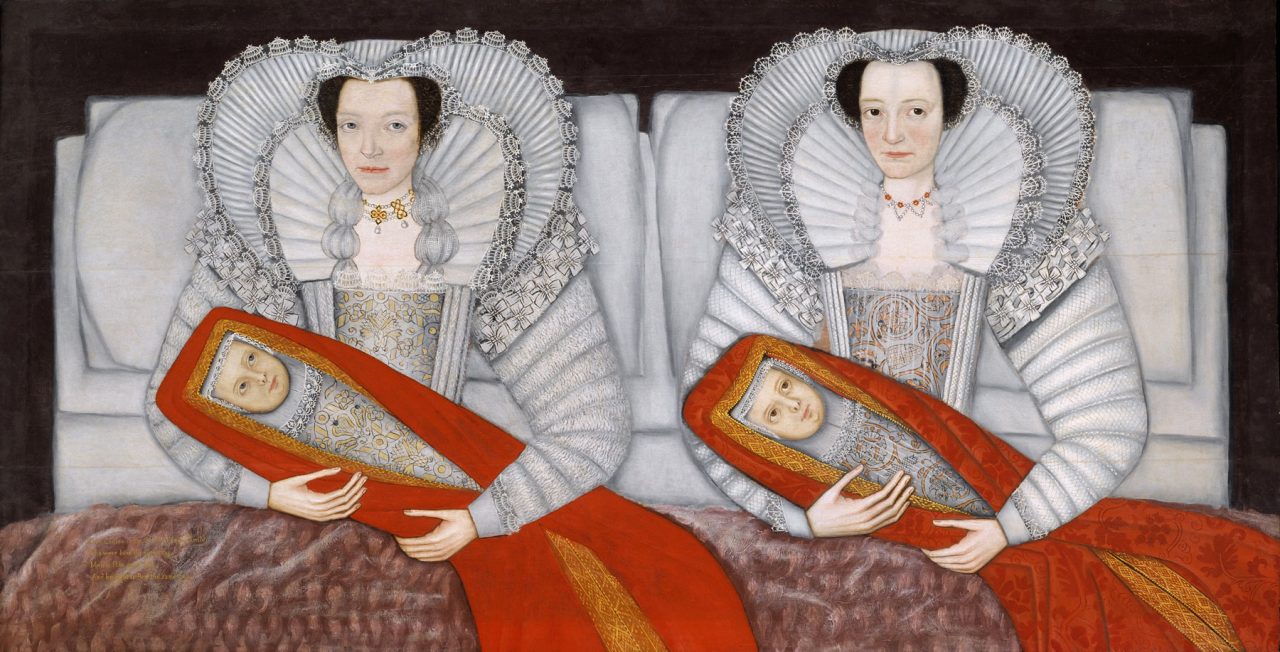Tate Britain is the original Tate Gallery, which opened in 1897 on the site of the former Millbank Prison and it features an extensive collection of British art spanning from the 1500s to the present day.
What to see at Tate Britain
The art gallery houses a collection of British art dating from Tudor times to the present day. It is particularly noted for its large collection of works of Joseph Mallord William Turner, who bequeathed his personal collection to the gallery.
The gallery is organised chronologically with more prominent artists having a room to themselves and some artists have multiple rooms, such as Turner who has eight rooms in the Clore Gallery.
Most galleries are located on the main floor (ground level if you enter by the Millbank entrance). This includes rooms organised by era starting in 1540 and working up to the present day as well as rooms highlighting specific artists including Henry Moore, Bernard Cohen, Antony Gormley, Craigie Horsfield, Elizabeth Price and John Constable plus the Turner collections in the Clore Gallery.
The upper floor has two rooms dedicated to William Blake.
Highlights of the gallery include The Cholmondeley Ladies (circa 1600–1610); Giovanna Baccelli (1782) by Thomas Gainsborough; Millais Ophelia (1851–1852 by Sir John Everett; Carnation, Lily, Lily, Rose (1885–1886) by John Singer Sargent; Three Studies for Figures at the Base of a Crucifixion (circa 1946) by Francis Bacon; No Woman, No Cry (1998) by Chris Ofili; Ghost of a Flea (1819–1820 by William Blake; The Opening of Waterloo Bridge (1832) by John Constable and Peace, Burial at Sea (1842), the Decline and Fall of the Carthaginian Empire (1817) and self portrait (1799) by JMW Turner.

Temporary exhibitions at the Tate Britain
Tate Britain also hosts a programme of temporary exhibitions. Temporary exhibitions include:
Lee Miller
This major exhibition (until 15 February 2026) offers the most comprehensive retrospective of surrealist photographer Lee Miller’s work ever staged in the UK. Known for her transition from sought-after model to influential photographer, Miller’s career spanned avant-garde scenes in New York, Paris, London and Cairo. The exhibition covers her involvement in surrealism, fashion and war photography, featuring around 250 prints, including rarely seen images. It also explores her lesser-known work, such as her photographs of the Egyptian landscape in the 1930s.
Turner and Constable
This exhibition (until 12 April 2026) marks 250 years since the births of JMW Turner and John Constable, two of Britain’s most influential painters. Although contemporaries and rivals, their approaches to landscape painting were distinct. Turner often depicted dramatic scenes and vivid sunsets, while Constable focused on familiar rural landscapes and natural authenticity. Featuring sketchbooks, personal items, and key works, the exhibition explores their contrasting styles, careers and shared legacy in transforming British art.
Art Now: Onyeka Igwe
Art Now: Onyeka Igwe (until 17 May 2026) presents a new installation of film, slides and sculpture exploring the University of Ibadan in Nigeria. Igwe examines the site’s layered histories, from colonial origins to post-independence transformation. Through shifting forms of projection and display, the work reflects on architecture, politics and collective memory within Nigeria’s oldest university.
Hurvin Anderson
This exhibition (26 March–23 August 2026) presents the first major solo exhibition by the British painter, Hurvin Anderson. Bringing together more than 60 works from across his career, it explores themes of identity, belonging and diaspora through richly coloured landscapes and interiors. Anderson’s paintings reflect his experiences growing up in Birmingham as part of the Caribbean diaspora and his ongoing dialogue between Britain and Jamaica.
James McNeill Whistler
The James McNeill Whistler exhibition (21 May–27 September 2026) is the first major European retrospective of the artist’s work in 30 years. Bringing together paintings, drawings and prints, it traces Whistler’s development from his early years in St Petersburg to his late self-portraits. The exhibition examines his experimental approach and his influence on modern art, as well as his role in shaping artistic identity in the 19th century.
The 90s
The 90s (1 October 2026–14 February 2027) explores a decade of creative change in British culture. Curated by Edward Enninful OBE, the exhibition examines how art, fashion, design and music intersected during a period of optimism and rebellion. Featuring work by Juergen Teller, Damien Hirst, Gillian Wearing and Alexander McQueen, it considers how 1990s Britain redefined artistic and cultural boundaries.
Vanessa Bell & Duncan Grant
Vanessa Bell & Duncan Grant (12 November 2026–11 April 2027) explores the creative partnership between two central figures of the Bloomsbury Group. Featuring more than 250 works, the exhibition traces their shared artistic life through paintings, decorative art, textiles and ceramics. A recreation of Grant’s studio from their Charleston home highlights their collaborative environment and the influence of Bloomsbury ideas on 20th-century British art.
Visiting Tate Britain
Tate Britain is located on Millbank on the River Thames across from Vauxhall. The closest tube stations are Pimlico and Vauxhall (both within a 10-minute walk) and Vauxhall and Victoria railway stations are also within walking distance.
It is around a 15-minute walk from the cluster of attractions around Westminster including Westminster Abbey, Jewel Tower, Churchill War Rooms, the Houses of Parliament and Elizabeth Tower (Big Ben).
There is a programme of free guided tours. These include tours focusing on various topics including the growth of British art, people and places of the 19th century and the paintings of JMW Turner.
The Djanogly Café and Rex Whistler Restaurant are located on the lower floor (ground level if you enter via the Manton entrance). The Djanogly Café is the more casual of the two with a nice selection of cakes, pastries, salads, pies and quiches and coffee that is roasted on-site whilst the Rex Whistler Restaurant, which features Rex Whistler’s mural The Expedition in Pursuit of Rare Meats, is much fancier with table service and an extensive wine list.
Most visitors spend 1–2 hours exploring Tate Britain.
We may earn a small commission if you book after clicking the links below.


There are no comments yet.